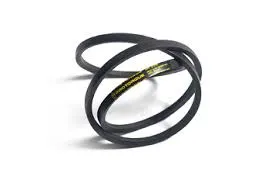- Arabic
- French
- Russian
- Spanish
- Portuguese
- Turkish
- Armenian
- English
- Albanian
- Amharic
- Azerbaijani
- Basque
- Belarusian
- Bengali
- Bosnian
- Bulgarian
- Catalan
- Cebuano
- Corsican
- Croatian
- Czech
- Danish
- Dutch
- Afrikaans
- Esperanto
- Estonian
- Finnish
- Frisian
- Galician
- Georgian
- German
- Greek
- Gujarati
- Haitian Creole
- hausa
- hawaiian
- Hebrew
- Hindi
- Miao
- Hungarian
- Icelandic
- igbo
- Indonesian
- irish
- Italian
- Japanese
- Javanese
- Kannada
- kazakh
- Khmer
- Rwandese
- Korean
- Kurdish
- Kyrgyz
- Lao
- Latin
- Latvian
- Lithuanian
- Luxembourgish
- Macedonian
- Malgashi
- Malay
- Malayalam
- Maltese
- Maori
- Marathi
- Mongolian
- Myanmar
- Nepali
- Norwegian
- Norwegian
- Occitan
- Pashto
- Persian
- Polish
- Punjabi
- Romanian
- Samoan
- Scottish Gaelic
- Serbian
- Sesotho
- Shona
- Sindhi
- Sinhala
- Slovak
- Slovenian
- Somali
- Sundanese
- Swahili
- Swedish
- Tagalog
- Tajik
- Tamil
- Tatar
- Telugu
- Thai
- Turkmen
- Ukrainian
- Urdu
- Uighur
- Uzbek
- Vietnamese
- Welsh
- Bantu
- Yiddish
- Yoruba
- Zulu
ធ្នូ . 11, 2024 13:08 Back to list
Choosing the Right Timing Belts for Your Vehicle Needs
The Importance of Timing Belts in Automotive Engineering
In the world of automotive engineering, the timing belt is a crucial yet often overlooked component. Often referred to as the heart of the engine, the timing belt synchronizes the rotation of the crankshaft and camshaft, ensuring that the engine's valves open and close at the correct times during each cylinder's intake and exhaust strokes. This synchronization is vital for optimal engine performance and efficiency.
How Timing Belts Work
The timing belt, usually made of reinforced rubber, is designed to withstand the stresses of the engine's operation. It features toothed edges that fit precisely into the gears on the crankshaft and camshaft, maintaining synchronization. The belt plays a key role in regulating the timing of engine functions, ensuring that the engine operates smoothly. As the crankshaft rotates, the timing belt moves the camshaft, aligning the engine components to ensure proper fuel intake and exhaust.
Signs of Timing Belt Wear
Despite their critical importance, timing belts are subject to wear and tear over time. Regular inspections are essential to identify any signs of deterioration, such as cracks, fraying, or stretching. Ignoring these indications can lead to catastrophic engine failure. A broken timing belt can cause the pistons to collide with the valves, resulting in extensive damage that is often not worth repairing. Car manufacturers typically recommend replacing the timing belt every 60,000 to 100,000 miles, but it's always wise to consult your vehicle's manual.
Benefits of Regular Maintenance
belts timing

Timely maintenance is key to maximizing the lifespan of your timing belt and ensuring the reliability of your engine. Regular inspections help detect issues before they escalate into major problems. Additionally, maintaining proper tension in the timing belt is crucial. A belt that is too tight can wear out prematurely, while a belt that is too loose can skip teeth, disrupting the desired synchronization and causing serious engine issues.
Not only does regular maintenance on the timing belt extend its life, but it also enhances overall engine performance. A well-maintained timing belt allows for efficient synchronization between the crankshaft and camshaft, leading to better fuel efficiency and reduced emissions. This attention to detail can ultimately save drivers money in fuel costs and reduce the vehicle's carbon footprint.
Upgrading Options
For automotive enthusiasts, upgrading to a high-performance timing belt can yield notable benefits. Performance timing belts are typically made with advanced materials and construction techniques that offer greater durability and resistance to heat and wear. They are often utilized in performance and racing applications, where precision and reliability are paramount. Upgrading to a performance timing belt can enhance engine responsiveness and provide peace of mind for drivers pushing their vehicles to the limit.
Conclusion
In summary, the timing belt is a pivotal component that plays an integral role in the overall functioning of an automobile. Recognizing its importance and adhering to a routine maintenance schedule can prevent significant engine problems down the line. Car owners should familiarize themselves with their vehicle’s timing belt specifications, including when it should be replaced. By taking diligent care of this crucial component, drivers can ensure their engines perform at their best, prolong the life of their vehicles, and enjoy a more reliable driving experience. Whether you're an everyday driver or a car enthusiast, understanding the importance of timing belts is essential for optimal vehicle maintenance.
-
Korean Auto Parts Timing Belt 24312-37500 For Hyundai/Kia
NewsMar.07,2025
-
7PK2300 90916-T2024 RIBBED BELT POLY V BELT PK BELT
NewsMar.07,2025
-
Chinese Auto Belt Factory 310-2M-22 For BMW/Mercedes-Benz
NewsMar.07,2025
-
Chinese Auto Belt Factory 310-2M-22 For BMW/Mercedes-Benz
NewsMar.07,2025
-
90916-02660 PK Belt 6PK1680 For Toyota
NewsMar.07,2025
-
drive belt serpentine belt
NewsMar.07,2025

